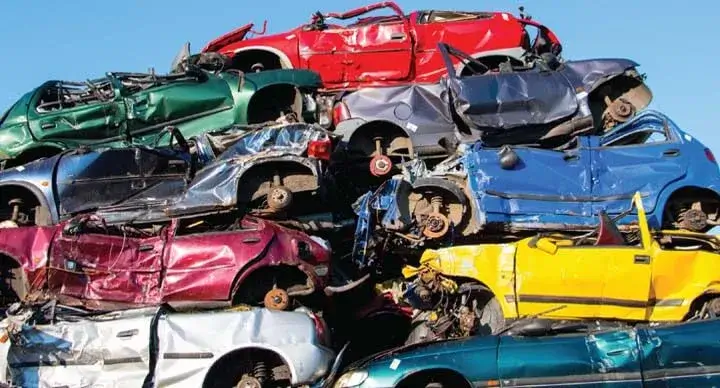
Everything You Must Know About Vehicle Scrapping
India has the third-largest automobile sector in the world and aims to expand its size in the near future. As per the records, it is the largest tractor manufacturer, third largest heavy truck manufacturer, and the second largest bus manufacturer. However, the hunger to maintain its regime lead to some consequences. It affects the environment adversely. However, in the quest for a sustainable, greener future, India is looking forward to its vehicle scrapping policy. The unstable or unfit vehicles are threats not only to your safety but also to the environment. Read this blog to learn more about the old vehicle scrapping policy in India.
What is the old vehicle scrapping policy In India?
The old vehicle scrapping policy is a government-funded program to scrap/dismantle old or unfit vehicles. The main goal of the policy is to create an ecosystem to completely remove the old vehicles from Indian roads to achieve a lower carbon footprint in the country. In simple terms, if your commercial vehicle is more than 15 years old and passenger vehicles are more than 20 years old, they have to undergo the fitness and emission test.
The most striking highlights of the vehicle scrapping policy In India are:
• It simply curbs air pollution and generates a new source of employment in the automobile industry sector.
• The buyers will get lucrative offers, including discounts from the auto manufacturer.
• The state will provide up to 25% and 15% refunds of road taxes for personal and commercial vehicles, respectively.
• The vehicle owners will provide a scrap value that is equivalent to 4% to 6% of the ex-showroom price.
Easy Procedure to Scrap Vehicle In India
Scrapping the old vehicle is one of the safest methods available to dispose of your old vehicle. It ensures that the vehicle is chopped into pieces and recycled. If you hold an old vehicle and are looking for how to scrap vehicle, then, below, we have explained the process in simple language.
Contact the Scrapping Centre
If you plan to scrape your old vehicle, then, foremost, get in touch with your local authorities. Each region has its own vehicle scrapping policy that might slightly differ. You can reach them via their official website or call on their official phone number. Once the appointment is fixed, drive the vehicle or get it towed.
Submit the Documents
You are asked to submit a set of official documents, including:
• Original vehicle Registration Certificate (RC).
• Digital photograph of the vehicle owner or the authorized person.
• Address proof of the vehicle owner.
• Cancelled cheque.
• The Automated Testing Station provided the ELV certificate.
• Identity proof of the authorized person.
• The owner's undertaking that the information provided by them is true.
Also, make sure that your vehicle possesses no legal liabilities, such as bank loans. Challans, insurance claims, accidental claims.
Let the scrapping Begin
The vehicle is weighted to determine its scrap value. Usually, it is around 4% -6% of the original ex-showroom price. Now, the vehicle is sent for scrapping. First, the tires and the CNG kit (if present) are removed. The vehicle is sent to the "de-pollutant" center to remove all fuels. After that, the car is dismantled.
The left is Recycled or Reused
After removing all the parts, the body shell of the vehicle is lifted by the crane and dropped into the crusher. All the body parts and the trims collected earlier are sold off as spare parts.
Get Your Certificate
Once the vehicle scrapping is completed, the recycler will provide you with the "certificate of destruction." You need to use this certificate at the RTO to get your vehicle deregistered. The scrap value is paid to you either through the cheque or transferred to you digitally.
What is vehicle Scrapping?
Usually, the vehicle scrapping means dismantling and disposing of the vehicle. The process of end-of-life vehicles (ELVs) involves safely handling hazardous materials such as cadmium, lead, and mercury. The process of scrapping a vehicle involves the following steps.
De-Pollution
Specialists remove hazardous materials such as cadmium mercury from the vehicle safely. Also, they remove the other fluids, such as coolant and brake oil. Lastly, they remove the batteries.
Dismantling
The experts dismantle the various components of the vehicles, such as suspension, engine, and transmission. These parts are later segregated based on recycling or reuse.
Recycling
The recycled parts melt down to create new materials. Usually, the parts are melted based on materials such as steel, copper, and aluminium.
The Bottom Line
At the broader level, the vehicle scrapping policy is a good mix of incentives for both automobile owners and vehicle dealers. Vehicle scrapping has a positive impact on the environment. It is a breakthrough for industries to use recycled materials. Feel free to call our experts if you are having further queries regarding vehicle scrapping in India.
